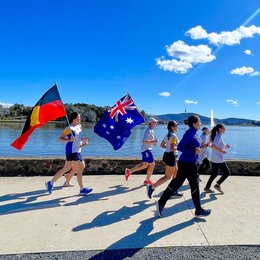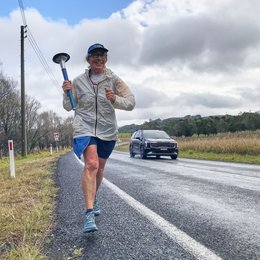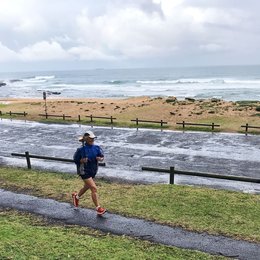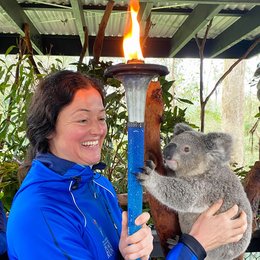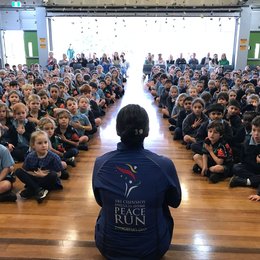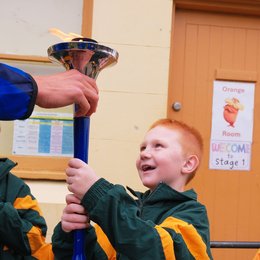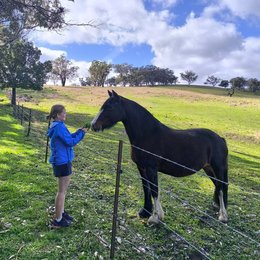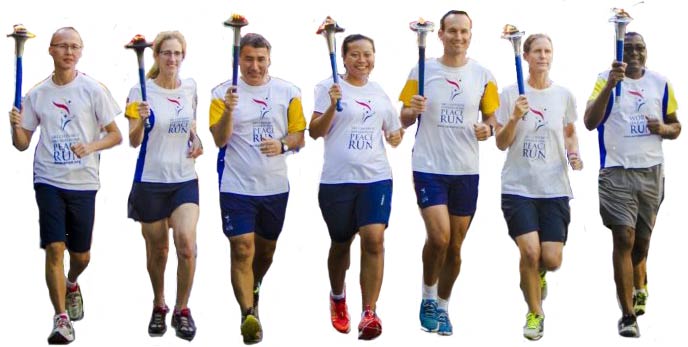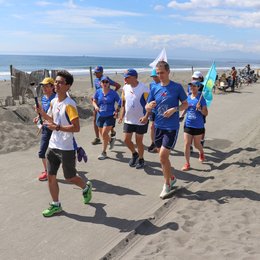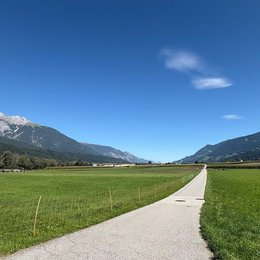
Today is not a day to run. Today is a day to focus inwards rather; to gather the energy which will propel us south across the desert on Monday.
At first light, the team gathers on the eastern side of Uluru for that ancient but daily liturgy of sunlight and rock –

– sunrise at Uluru.
There is a signposted area – sunrise viewing area – and, though there are many people there, a sense of peace pervades. There is a stillness to this place that goes far beyond the mere lack of wind.

At this hour, the air is cool and then the Sun paints the rock in red light. The vertical layers are picked out in sharp contrast and we sit in silence.
I climbed once the tower of the cathedral in Cologne. It is not that the rock reminds one of the cathedral: rather, that the cathedral tries to approximate some prototype of which Uluru is a supreme expression.

Before the presence of the rock, speculation and mental reasoning fall away. Deep in the rock's crystalline heart move stories we may never know and a sense of time we may never understand.
'More time. More time,' was our photographer Prabhakar's response and indeed one could sit still before many sunrises here and experience something different each time.

Once the Sun is well up we approach the foot of the rock at Mutitjulu waterhole. From right at the base one feels the three-dimensions of the rock – red rock sweeps in giant waves skyward to a crest where it meets the flawless blue sky and the crescent of the Moon.

As we travel around the rock we can see the scars and strange erosions that mark its faces – signs of significance to those who understand the stories of this place: this the tail of a kangaroo, that the bite of the snake.

– of the more convoluted and baroque shapes of Kata Tjuta, which had beckoned to us at Uluru at dawn.

From our campground at Yulara it is nearly 50 km across yellow-white grassland dotted with Dr Seuss trees and occasional dustings of pink-purple flowers to Kata Tjuta.

It may not have the immediate power of Uluru but its great rounded, smooth, yeasty shapes show an interplay of air and water and rock that is just as mysterious as its counterpart.

Here, apparently, live rock kangaroos and other strange Australian wildlife but they are not visible on a baking afternoon.

Even to the non-geologist the rock here is noticeably different from that of Uluru. It seems constructed from many rocks stuck together.

Some strange process has gouged out holes in the gorge walls leaving them dotted with caves, and, on the canyon floor ...

The valleys between the domes collect the rainwater from the run-off above, offering havens for trees and the fauna that rely on them.

Next is the walk through the aptly named Valley of the Winds. The view from the first lookout is a mere hint of the grandeur to come.


